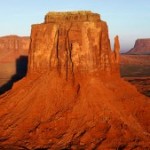You can’t get a good night’s sleep anymore in Utah with all these earthquakes.
Welcome to Ute Hub › Forums › Misc › You can’t get a good night’s sleep anymore in Utah with all these earthquakes.
- This topic has 4 replies, 4 voices, and was last updated 6 years, 4 months ago by
 UtahFanSir.
UtahFanSir.
-
AuthorPosts
-
-
 cjd1Participant
cjd1ParticipantThat was a 3.1 at 2:30 am this morning.
-
 Tony (admin)Keymaster
Tony (admin)KeymasterHmm. Wonder if a big one is coming.
-
 GameForAnyFussParticipant
GameForAnyFussParticipantShort answer: Nope
Rather I should say, the recent earthquakes haven’t changed the probability of the big one hitting. We are still overdue for one.
Visit quake.utah.edu
-
 UtahFanSirParticipant
UtahFanSirParticipantActually, the big one is coming. If Tony’s question was, “are these recent earthquakes evidence that the big one is coming soon?” Then the answer is nope.
-
-
 UtahFanSirParticipant
UtahFanSirParticipantThe Salt Lake segment of the Wasatch fault has not broken in 1,000 years and some believe it is overdue. The Bingham segment has not broken for 2,000 years. Most of these fault segments have a periodicity of 500 years, perhaps longer. Geologic studies show that at least 22 surface-faulting earthquakes have occurred on the Wasatch fault during the past 6,000 years. Displacement has been as large as 12 feet of offset.
While the Wasatch fault zone stretches from just north of Mallad south of Fayette, there are a semi-continuous series of fault segments literally from St. George up to the Tetons, if not further north. They represent the eastern margin of the Basin and Range Province fault block system. A series of N-S trending fault systems go across Utah-Arizona, Nevada to eastern California, called also the Great Basin. The Basin and Range physiographic province is extending east and west and has been for about 50 million years, creating fault blocks where the valley floors are dropping and the mountains are blocks that are rotating. The rotating block creates the mostly N-S trending mountains.
Most of the recent earthquakes along the eastern margin are 10 kms depth (6.3 miles) to 3 to 4 kms depth. Earthquakes along the zone began months ago in and around St. George and appear to be moving northward. The earthquakes are minor, actually. The amount of energy released in a magnitude 3.0 earthquake is ten times less than a magnitude 4.0. A major range front fault earthquake would be on the order of 6.0. A number of magnitude 4.0 earthquakes have occurred near Fillmore over the last few months.
So what could be occurring is small releases of energy in upper crustal movement along the greater Wasatch fault zone. Foreshock (smaller earthquakes) activity is detected for ~40% of all moderate to large earthquakes, and about 70% for events of M>7.0. I’m not suggesting that these series of earthquakes are foreshocks but that is not out of the question. Increase in foreshock activity is difficult to quantify for individual earthquakes but becomes apparent when combining the results of many different events.
-
-
-
AuthorPosts
- You must be logged in to reply to this topic.
